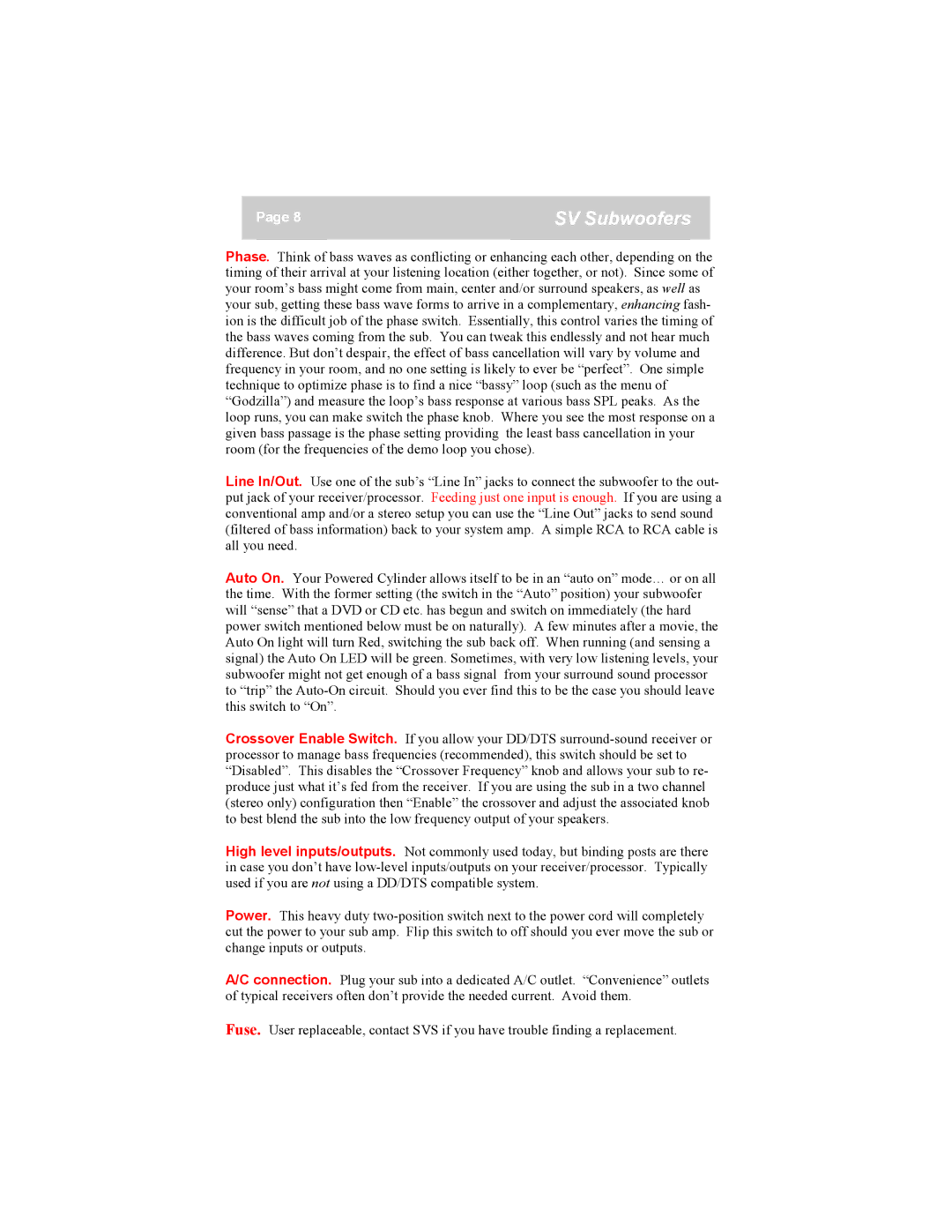20-39PCi, 16-46PCi, 25-31PCi specifications
SV Sound (SVS) has established itself as a sterling name in the realm of high-performance audio equipment, and the trio of subwoofers – 16-46PCi, 20-39PCi, and 25-31PCi – showcases its dedication to exceptional audio quality, innovation, and craftsmanship. Each model is designed to deliver powerful, deep bass reproduction, allowing audiophiles and home theater enthusiasts to enjoy a rich, immersive sound experience.The 16-46PCi stands out with its dynamic 16-inch driver and a tuned port design, optimizing performance at both low and high volumes. With a frequency response that extends down to 16 Hz, it is capable of producing sub-bass frequencies with unparalleled accuracy. This model features a powerful amplifier, offering 500 watts RMS and peaking at 1,200 watts, ensuring robust power and minimal distortion even during the most intense movie scenes or musical performances. The 16-46PCi's cabinet construction incorporates high-quality MDF, which aids in reducing resonance and enhancing clarity.
Next in line is the 20-39PCi, featuring a larger 20-inch driver designed for deeper bass extension and pressure. Ideal for larger rooms, this subwoofer also offers a frequency response down to 20 Hz. The 20-39PCi employs a similar high-powered amplifier configuration with remarkable 500 watts RMS, peaking at 1,000 watts. Its rear-firing port design permits airflow that enhances both efficiency and sonic impact. This model excels in seamlessly blending with other speakers, providing a balanced sound that can fill large spaces without overwhelming the listener.
Finally, the 25-31PCi subwoofer targets those seeking an optimal mix of size and performance. With a 25-inch driver, it delivers impressive power and depth, producing frequencies as low as 25 Hz. The 25-31PCi is designed for ultimate flexibility, sporting a dual port configuration that allows users to adjust tuning based on room acoustics. Boasting similar power specifications as its siblings, it ensures that dynamic content is reproduced with tight control and precision.
All three models incorporate SVS’s proprietary technologies, such as adjustable phase control, low-pass filter, and variable gain settings, ensuring seamless integration with existing audio systems. Their stylish aesthetics, combined with exceptional build quality, make these subwoofers not only functional but also visually appealing additions to any listening space.
In summary, the SV Sound 16-46PCi, 20-39PCi, and 25-31PCi subwoofers cater to diverse audio needs, offering high-quality engineering that brings cinematic and musical experiences to life.
